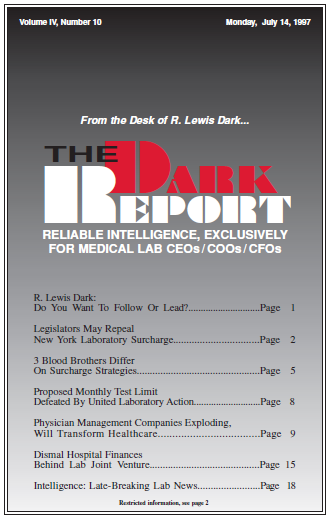CEO SUMMARY: 1995 marked a pace-setting agreement between Columbia and LabCorp. LabCorp would consolidate and manage the laboratories at three Columbia Hospitals. All participants agree that the project has met expectations. But Columbia has yet to clone this model elsewhere. Here’s why. COMMENTATOR Paul Harvey is famous for his trademark radio programs which end with […]
To access this post, you must purchase The Dark Report.


